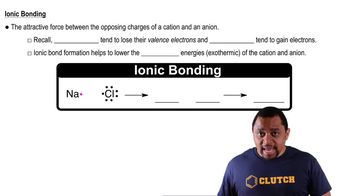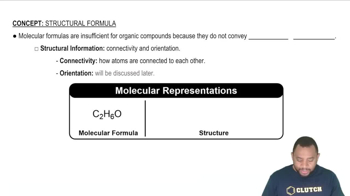Here are the essential concepts you must grasp in order to answer the question correctly.
Ionic Bonding
Ionic bonding occurs when electrons are transferred from one atom to another, resulting in the formation of charged ions. In ammonium chloride (NH4Cl), the ammonium ion (NH4+) and the chloride ion (Cl-) are held together by strong electrostatic forces, creating a stable ionic compound. This type of bonding is crucial for understanding the structure and properties of salts.
Recommended video:
Molecular Structure
Molecular structure refers to the arrangement of atoms within a molecule and the types of bonds that hold them together. In the case of NH4Cl, the ammonium ion is a polyatomic ion with covalent bonds between nitrogen and hydrogen atoms, while the bond between NH4+ and Cl- is ionic. Understanding this distinction helps clarify the nature of interactions in solid ammonium chloride.
Recommended video:
Solid State Chemistry
Solid state chemistry studies the synthesis, structure, and properties of solid-phase materials. In solid ammonium chloride, the ions are arranged in a crystalline lattice, which influences its solubility and stability. Recognizing the solid-state structure is essential for determining whether specific bonds, like N—Cl, exist in the solid form of the compound.
Recommended video:
Crystalline Solids Structure
 Verified step by step guidance
Verified step by step guidance


